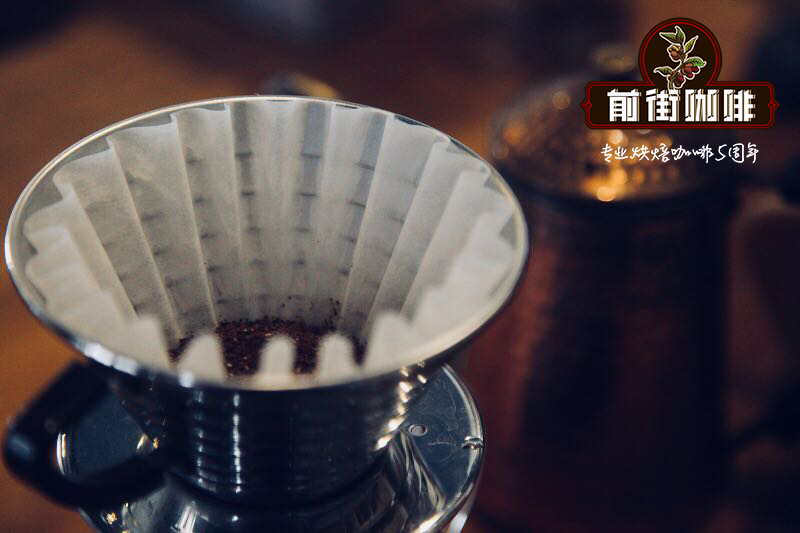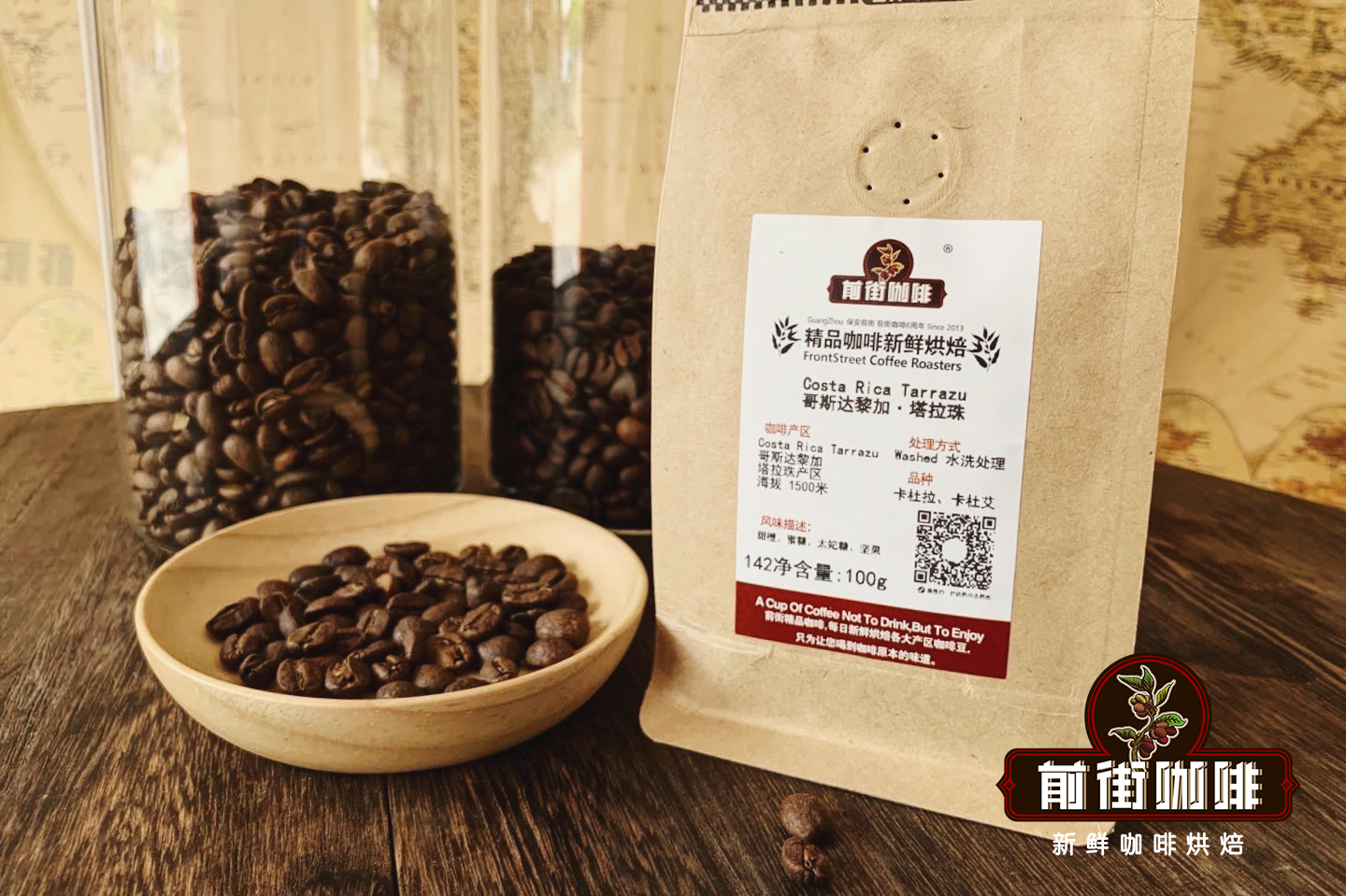The preferred source of coffee beans in Latin America A brief introduction to Breakfast Coffee beans
Professional coffee knowledge exchange more coffee bean information please follow the coffee workshop (Wechat official account cafe_style)
Introduction to Latin American Coffee
There are many versions of the introduction of coffee into Latin America. It is generally believed that French naval officer Gabriel Mathieu de Clieu,1687-1774 opened up a great business opportunity for Latin American coffee after stealing one or more coffee seedlings from the royal greenhouse and taking them to the Caribbean island of Martinique in 1720. The coffee growing region of Latin America refers to the countries of Central and North and South America as well as Mexico of North America. The coffee here is often referred to as washed coffee, which is generally processed by fermentation to form its flavor (except in Brazil, where natural drying is used). Qianjie Coffee believes that the coffee beans produced in Latin America taste balanced and mild, with fresh acidity and charming cocoa and nut flavors.
Today, Latin America is one of the most important coffee producing areas in the world, and coffee has become a specialty of Latin America. According to statistics, coffee plantations account for at least 45% of the arable land in Latin America today. Because of its geographical location, coffee beans from Latin America are mainly sold to the United States, followed by Europe and Asia. Generally speaking, coffee producing areas are mostly located in developing countries, while coffee consuming countries are the so-called first world. Although Latin America is a coffee producer, Latinos are also coffee lovers. In addition to the common American style, mocha, latte, cappuccino and espresso, each region also has its own drinking methods and terms, which leads to a unique coffee culture.
The original purpose of Qianjie coffee is not to sell beans, but to taste coffee beans from all over the world. In this process, the purpose of Qianjie Coffee is to understand each coffee producing area, different coffee varieties in the same producing area, different treatments of the same coffee variety, and to establish a corresponding database, as well as the comparison between different coffee producing areas. Qianjie Coffee hopes to let more coffee lovers know about the world of coffee.
When tasting coffee, Qianjie Coffee always asks yourself the following questions: which kind of coffee beans from a particular place of origin best reflect the best local climate and first-class planting technology at the same time? Qianjie Coffee is looking for coffee beans with local characteristics, which is what French wine makers say: go local t de terroir.
Coffee beans originating from the three major growing areas in the world have their own distinctive characteristics:
Latin American coffee is mostly refreshing, with a familiar and cordial flavor, often reminiscent of nuts or cocoa.
African / Arabica coffee has a unique and attractive flavor and exudes floral aromas as well as berry and citrus aromas.
Asian / Pacific coffee is full-bodied and full-bodied, full-bodied and full-bodied, with aromas of earth and vanilla.
Coffee processing technology
At present, there are more and more methods of handling coffee beans, and the beans of Qianjie Coffee basically include all the mainstream processing methods at present. Latin American coffee is generally treated by washing and fermentation, and the rigorous processing can ensure that the quality of coffee beans is better, the defect rate is low, and the beans are large and complete. Generally speaking, the coffee in this area has a pleasant aroma and a well-balanced flavor, usually with a special cocoa-like flavor and fresh and lively acidity.

Flavor characteristics of Latin American Coffee
The main coffee producing areas in Latin America (about 60%): Brazil's Santos Coffee is famous; Jamaica's most famous is the Blue Mountain Coffee, which is known as the "best coffee"; coffee is also produced in Mexico, Panama, Peru, Colombia, Guatemala, Costa Rica, Cuba, Venezuela, Nicaragua and other Latin American countries.
The overall flavor of Latin American coffee is famous for its balance, and all the flavors in Latin American coffee can be found in Latin American coffee. The widespread use of wet treatment of raw beans is also one of the characteristics of Latin American coffee, good processing also makes its beans larger and more uniform than African coffee, and the defect rate is lower.
Starbucks Latin American coffee beans
Starbucks preferred coffee beans
Starbucks' preferred coffee is a blend of Latin American beans, which was also launched in 1971. This means that how long Starbucks has been open, how long the first choice of integration has been sold!
Starbucks Breakfast mixed Coffee beans
Starbucks introduced this coffee bean to people who like mild taste in 1998. Breakfast coffee beans are less roasted than most Starbucks coffee beans. The roaster uses the perfect heat to roast the coffee beans just right, which leads to the aroma and flavor of the roasted coffee beans. If you wake up in the morning for a cup of coffee that is not too intense, but want to taste rich taste and flavor, breakfast mixed coffee beans will be your best choice. This coffee bean has lively citrus aromas and a perfect finish with a clean finish.
Latin American Coffee represents countries
Brazil
Taste characteristics: mild, moderate sour and bitter, soft aroma
Brazil is the world's largest coffee producer, accounting for 1x3 of the world's total output and occupies a place in the global coffee market. Although Brazil faces several times higher natural disasters than other regions, it has enough acreage to make up for it. There are many kinds of coffee in Brazil, but because of its high yield and low price, there are not many kinds of excellent coffee and are often used to mix other coffees.
Colombia
Flavor characteristics: sour and raspberry aromas, with caramel aromas, full of sweetness
Colombia is one of the largest producers of high-quality coffee in the world, a bright pearl in the world coffee map and a coffee land blessed by God. Colombia has a wide range of producing areas, such as Medellin, Armenia and Manizales, which are commonly referred to as "MAM".
Honduras
Taste characteristics: the taste is not sour, mellow and fragrant, suitable for beginners
Honduras produces two kinds of coffee of very good quality, which are highly respected by coffee lovers. One is "Highland Coffee", which grows at an altitude of 1000 mi 1500 meters above sea level. The other is "selected Highland Coffee", which grows at an altitude of 1500mur2000 meters, which represents the highest level in Honduras. Most of the Honduran coffee is exported to the United States and Germany.
Panama
Taste characteristics: the unique bright sour taste represented by Rosa rugosa
Caffeine in Panama (Geisha) is famous in the world. The reason is that it is closely related to Panama's unique physical and geographical conditions. Panama is the southernmost country in Central America, bordering the Caribbean Sea to the east, the Pacific Ocean to the west, Costa Rica to the north and Colombia to the south-it is an important isthmus connecting North and South America. Under the influence of such geographical factors, Panama has a complex and changeable microclimate, which also creates a unique flavor of Panamanian coffee.
Costa Rica
Flavor characteristics: chocolate aroma and nutty flavor, moderate acidity
The coffee beans produced at the high latitudes of Costa Rica are famous in the world, and their three most famous producing areas are Tarasu, south of the Costa Rican capital SanJose, and the central and western valleys.

Guatemala
Taste characteristics: bitter and fragrant, good taste
The central region of Guatemala is home to world-famous coffee with excellent flavor. Most of the coffee beans here have charcoal flavor and cocoa flavor, but their acidity is slightly stronger. Slightly sour, mellow and smooth, it is the best material for mixed coffee. The classification is divided into seven grades according to the elevation. The higher the origin, the more mellow the coffee beans are, while the coffee beans from the lower areas are of lower quality.
Peru
Taste characteristics: chocolate, rich acidity, mellow and smooth
Peruvian coffee is grown in a planned way, which has greatly increased coffee production. Peru's main producing areas are the north and central. Nearly 70% of Peru's coffee comes from the north and is mainly grown organically.
Ecuador
Taste characteristics: medium alcohol thickness, layered acidity and high sweetness
Ecuador's main producing area is the province of Manabi (Manabi), which is dry near the sea and at an altitude of 300,000m above sea level. it is the largest coffee producing area in Ecuador, and its Arabica accounts for half of the country's production.
Jamaica Blue Mountains
Taste characteristics: full-bodied, sweet, sour and bitter, no bitterness, moderate and perfect acidity, long-lasting fruit taste
Jamaican Blue Mountain Coffee has a high reputation, low production and a long history. It can be said that even if you have never tasted boutique coffee, you have heard of Blue Mountain Coffee.
Bolivia
Taste characteristics: obvious fruit tonality, sometimes with floral aroma
Bolivia has limited the development of its coffee due to transportation difficulties, but the quality is not poor at all. Bolivian beans are of good quality. Especially when Miki Suzuki of Japan won the world runner-up with Bolivia's geisha at the WBC (World barista Competition) held in Seoul in 2017, Bolivia, a coffee producer, became even better known.
For more boutique coffee beans, please add private Qianjie coffee on Wechat. WeChat account: kaixinguoguo0925
Important Notice :
前街咖啡 FrontStreet Coffee has moved to new addredd:
FrontStreet Coffee Address: 315,Donghua East Road,GuangZhou
Tel:020 38364473
- Prev

Introduction to the characteristics of variety treatment method for flavor description of Peruvian coffee bean manor
Peruvian coffee bean manor regional flavor description taste variety treatment characteristics Peruvian coffee beans are most famous for their coffee beans from Mayou in the middle and Cusco in the south. In addition, some areas in northern Peru also produce characteristic organic coffee. Organic coffee is made of beans grown in the shade of trees. Although the method of planting in the shade makes coffee beans grow
- Next

Introduction to the characteristics of taste treatment of varieties in Burundian coffee flavor description
Introduction to the characteristics of taste treatment of varieties in Burundian coffee flavor description: acidity (brightness) (1-10): not applicable taste (hierarchical feeling) (1-10): not applicable taste (alcohol thickness) (1-5): not applicable aftertaste (residue) (1-10): not applicable balance (1-5): not applicable basic score (50): not applicable total score (maximum 100): not applicable to Bloom.
Related
- Detailed explanation of Jadeite planting Land in Panamanian Jadeite Manor introduction to the grading system of Jadeite competitive bidding, Red bid, Green bid and Rose Summer
- Story of Coffee planting in Brenka region of Costa Rica Stonehenge Manor anaerobic heavy honey treatment of flavor mouth
- What's on the barrel of Blue Mountain Coffee beans?
- Can American coffee also pull flowers? How to use hot American style to pull out a good-looking pattern?
- Can you make a cold extract with coffee beans? What is the right proportion for cold-extracted coffee formula?
- Indonesian PWN Gold Mandrine Coffee Origin Features Flavor How to Chong? Mandolin coffee is American.
- A brief introduction to the flavor characteristics of Brazilian yellow bourbon coffee beans
- What is the effect of different water quality on the flavor of cold-extracted coffee? What kind of water is best for brewing coffee?
- Why do you think of Rose Summer whenever you mention Panamanian coffee?
- Introduction to the characteristics of authentic blue mountain coffee bean producing areas? What is the CIB Coffee Authority in Jamaica?

